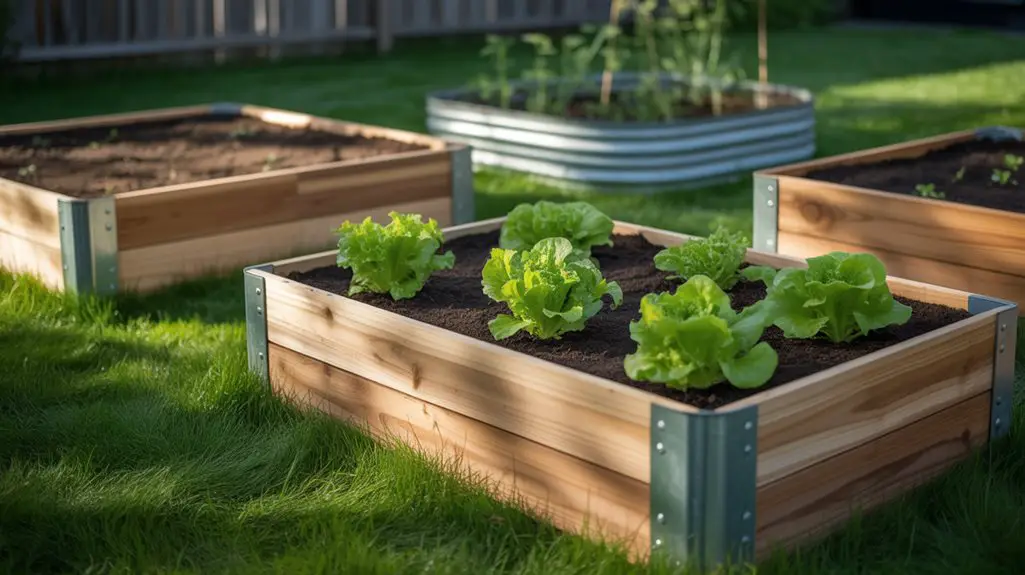Just as rain nourishes your garden, rainwater collection barrels can replenish your home’s water supply while reducing your environmental footprint. You’ll find these systems—ranging from simple 50-gallon containers to complex 500-gallon setups—intercept rooftop runoff before it contributes to stormwater pollution. They’re not merely storage vessels; they’re practical tools that convert free precipitation into usable water for irrigation, cleaning, and sustainable living practices. The question isn’t whether you can afford a rain barrel, but whether you can afford to waste free water.
How Rain Barrels Help Homeowners Save Money and Water
When implemented properly, rainwater collection systems provide homeowners with substantial economic and ecological benefits.
You’ll see immediate reduction in municipal water consumption, particularly during summer months when outdoor water usage peaks. A typical 55-gallon barrel can fill completely during a single moderate rainfall, capturing water that would otherwise become runoff.
This stored water reduces utility bills by supplying non-potable water for gardens, lawns, and washing applications. Most households can save 1,300+ gallons annually with a single barrel.
The financial impact becomes more significant during drought conditions when water restrictions and surcharges are common. Additionally, you’re mitigating stormwater runoff that contributes to erosion and pollution of local waterways, creating a sustainable water management solution that benefits both your budget and the environment. Rainwater systems can also enhance the overall design of your backyard, making it both functional and aesthetically pleasing.
Types and Sizes of Rainwater Collection Systems

While basic rain barrels represent the entry point for most homeowners, rainwater collection systems actually span a spectrum of sophistication and capacity.
You’ll find compact 50-gallon barrels that fit neatly beside downspouts, mid-sized 100-200 gallon systems that service moderate gardening needs, and large-scale 500+ gallon cisterns for thorough property irrigation.
Materials vary greatly—from recycled food-grade plastic barrels to decorative ceramic vessels and durable polyethylene tanks.
Above-ground systems offer accessibility and lower installation costs, while below-ground cisterns maximize space and protect water from sunlight and freezing.
Advanced systems incorporate first-flush diverters that prevent initial contaminated runoff from entering your storage, multi-stage filtration, and integrated pumps for pressurized distribution.
When selecting your system, consider your precipitation patterns, collection surface area, and intended water usage applications.
Installation Steps for Your First Rain Barrel

After selecting the appropriate collection system for your needs, you’ll need to properly install your rain barrel to maximize its effectiveness.
Begin by choosing a level surface near your downspout, preferably using concrete blocks or a sturdy platform to elevate the barrel for gravity-fed water pressure.
Next, modify your downspout by cutting it 2-4 inches above the barrel’s inlet and installing a diverter or flexible extension.
Confirm your barrel has a tight-fitting lid with mosquito screens over all openings to prevent larvae development and debris infiltration.
Install an overflow valve directed away from your foundation to manage excess water during heavy rainfall.
Finally, attach a spigot near the bottom for easy access, and consider connecting a soaker hose for automated garden irrigation that maximizes your harvested rainwater’s utility. Additionally, using affordable rainwater harvesting solutions can further enhance your water collection efforts.
Maintaining Your Rainwater Collection System Year-Round
Regular maintenance of your rainwater collection system guarantees peak performance throughout changing seasons and extends the operational lifespan of all components.
Implement a systematic inspection schedule to identify emerging issues before they escalate into costly repairs.
- Clean your barrel’s intake screen quarterly to prevent debris accumulation that restricts water flow.
- Drain the system completely before first frost to prevent freeze damage to pipes and connectors.
- Check all seals and gaskets biannually, applying food-grade silicone lubricant when necessary.
- Test water pH levels seasonally if using for garden irrigation to verify ideal plant health.
- Inspect mosquito deterrents monthly during warm seasons, replacing or revitalizing as needed.
This proactive maintenance regimen guarantees sustainable water collection efficiency and preserves your investment in ecological resource management.
Creative Ways to Use Harvested Rainwater in Your Garden
Harvested rainwater offers gardeners numerous ecological advantages beyond basic irrigation, transforming standard gardening practices into sustainable water management systems.
You’ll maximize this resource by implementing drip irrigation systems that deliver water directly to plant roots, reducing evaporation and runoff by up to 60%.
Consider creating self-watering planters using capillary action—these draw stored rainwater upward as soil dries.
For seedlings and delicate transplants, you can apply foliar feeding by spraying diluted compost tea made with rainwater, which plants absorb through their leaves more efficiently than soil applications.
Construct rain gardens in low-lying areas to filter runoff through native plants and permeable substrates.
You’ll also benefit from using rainwater for cleaning garden tools, as its mineral-free composition prevents tool deterioration and seed-starting trays benefit from its neutral pH. Additionally, implementing innovative rainwater systems can further enhance your garden’s sustainability and efficiency.
Legal Considerations for Residential Rainwater Harvesting
Before installing rainwater collection systems, you’ll need to navigate varying legal frameworks that differ markedly across municipalities, counties, and states.
Water rights laws originally designed for agricultural and commercial uses can impact residential harvesting permissions, creating a complex regulatory landscape.
- Check local building codes for barrel placement, foundation, and overflow requirements
- Verify permit requirements, which may include engineering approval for systems exceeding specific volumes
- Research homeowners association covenants that might restrict visible collection equipment
- Understand water quality regulations if you plan to use harvested water for potable purposes
- Review tax incentives or rebates offered by local utilities or environmental agencies
Many jurisdictions have modernized regulations to encourage conservation, but ignoring legal parameters could result in fines or mandated system removal.
Consult your municipal water authority for location-specific guidance.
Connecting Multiple Barrels to Maximize Collection Capacity
When your initial rainwater barrel reaches its capacity, a connected barrel system becomes essential for capturing the maximum amount of precipitation during heavy downpours. You’ll need to link barrels using food-grade PVC connectors installed near the base, allowing water to flow horizontally through the system while maintaining equal pressure distribution.
| Connection Type | Benefits | Installation Complexity |
|---|---|---|
| Daisy Chain | Linear setup, simple flow path | Low |
| Manifold | Equal pressure distribution | Medium |
| Overflow Series | Maximizes vertical space | High |
For ideal functionality, guarantee a slight elevation gradient between barrels (1/4″ per foot) to aid gravity flow. Install overflow outlets directed away from your foundation on the final barrel. This modular approach allows you to incrementally expand your collection capacity as your water harvesting needs evolve.
Conclusion
You’ve explored rainwater collection systems, yet ironically, these simple barrels represent complex ecological solutions. While you’re saving money on water bills, you’re simultaneously mitigating stormwater runoff issues that plague urban watersheds. Your modest investment in collection infrastructure creates exponential environmental returns through reduced municipal demand and enhanced hydrological cycles. Don’t overlook that your localized water management strategy contributes to broader conservation metrics across your regional watershed system.




